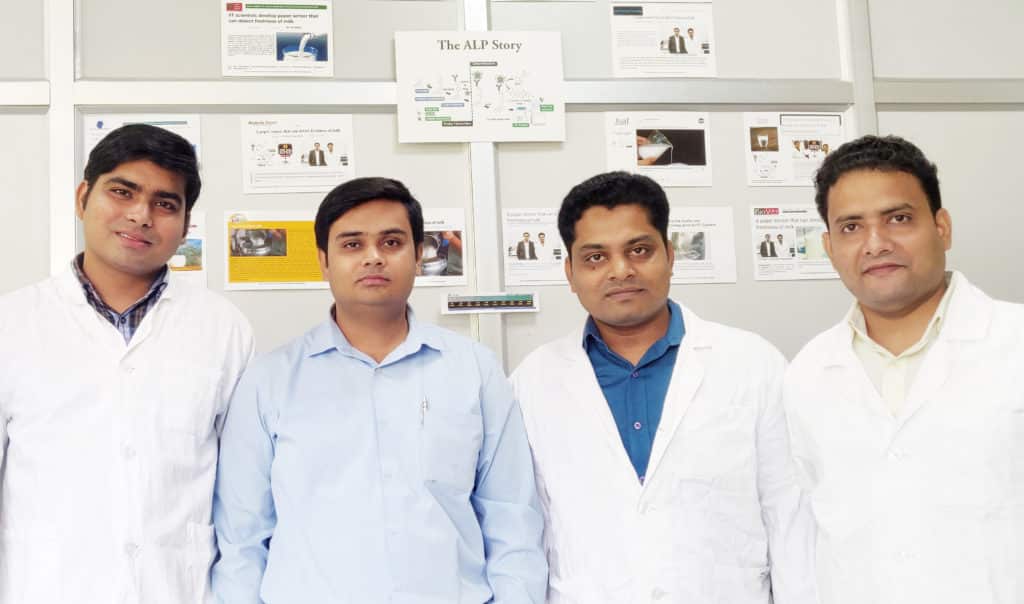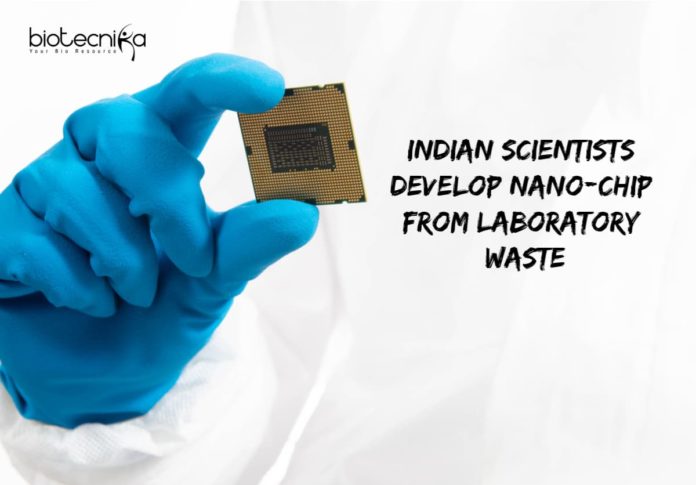Nano-chips for disease diagnosis developed by Scientist from IIT Guwahati
The scientists from IIT Guwahati have developed a nano-chip from laboratory waste which can detect Hydrogen peroxide, a toxic chemical produced in our body as resultant to various metabolic pathways. This can be used for detecting overproduction of hydrogen peroxide, which in turn helps in the disease diagnosis.
Hydrogen peroxide is a commonly used disinfectant for cuts and burns. In the body, it is generated as a byproduct of the metabolic pathway and can be dangerous to the proteins. The overproduction in the body can be an indication of an imbalance in the metabolic process due to disorders like cancer, inflammation, neurogenerative diseases, cardiovascular disorders, and diabetes.
Enzyme peroxidase based methods are commonly used to detect hydrogen peroxide in tissues, blood, urine, etc. These methods are expensive, lengthy, and requires a trained technician to handle the process. The short shelf life of the enzymes is another disadvantage.

The researchers from IIT Guwahati have come up with an enzyme-free nano-chip to detect hydrogen peroxide. The discarded Indium tin oxide plates used in scanning electron microscope were plated with gold
, and the peroxidase activity of gold was exploited to detect hydrogen peroxide.The surface area of the gold plated chip was increased by the process of sputtering to create more surface area for hydrogen peroxide detection. The chip was later tested under electron microscopy and its efficacy was assessed in detecting hydrogen peroxide in human blood samples.
As explained by Dr.Pranjal Chandra, Leader of the research team- The sensor development process is speedy. The entire process of fabrication of the sensor chip from the raw materials will take up to 30 minutes and can be used multiple times without losing the efficiency.
The nano-chip can detect very low levels of hydrogen peroxide within milliseconds. The presence of substances like glucose, citric acid, ascorbic acid, uric acid, etc. do not affect the detection of hydrogen peroxide. This chip remains stable for up to 12 weeks. Hydrogen peroxide can also be detected in samples like tear, urine, serum, etc.
The team plans to work towards developing handheld devices which can be integrated with an interface like a mobile phone-based on the same principle and protocol demonstrated in developing nano-chip.
This research on developing Nano-chip for disease diagnosis was supported by grants from the Department of science and technology. The research findings of Buddhadev Purohit, Kuldeep Mahato, and Ashutosh Kumar were published in journal Microchimica Acta.































Can anyone apply for this project?